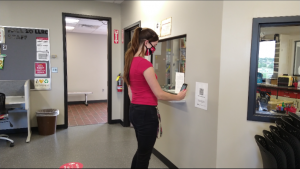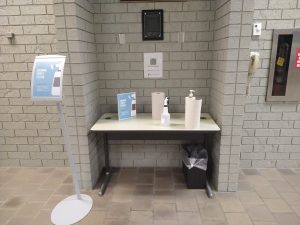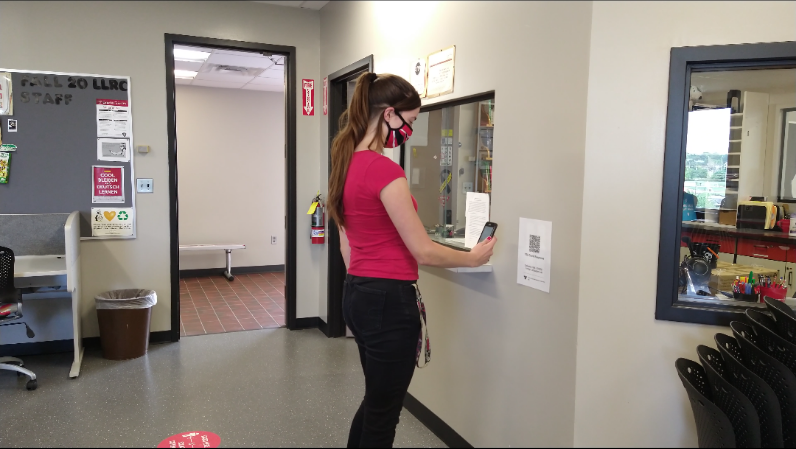By C. Aileen Blaine

Youngstown State University scattered QR codes across campus in common areas like classrooms, lobbies and study lounges this semester. Students in these areas for longer than 15 minutes are required to scan the QR code using the YSU app. Administration can then efficiently trace and alert those who may have come into contact with a person infected with COVID-19.
The Center for Disease Control and Protection defines close contact as being within six feet of an infected person for at least 15 minutes. Unfortunately, it isn’t easy to know who might or might not be infected, particularly in asymptomatic cases.
Julie Gentile, the director of Environmental and Occupational Health and Safety at YSU, oversees contact tracing on campus.
“If an individual tests positive, we might not know that for three or four days,” Gentile said. “In the meantime, it’s going to be important that students, faculty and staff are following safety protocols that ask everyone to sanitize their work stations.”

Nicole Kent-Strollo, director of Student Outreach and Support, said limiting group sizes can help slow the spread of the virus. Administration can quickly trace who may have come into contact with an infected individual.
“For the classroom settings, what we’ve done is ask the faculty to keep track of their seating charts and have students in assigned seating,” Gentile said.
There’s no direct approach to each suspected case, Kent-Strollo said, because of additional factors that must be considered before determining if a student needs to quarantine. She said the added intricacies of a college campus further complicate matters. At YSU, many people commute from several counties in Ohio and Pennsylvania. While some students may not be required to quarantine per CDC and health department guidelines, some may feel more comfortable with quarantining, she said.
Kent-Strollo said the QR codes serve multiple purposes, such as providing direction to cleaning staff on areas that may require special attention, or alerting those who may need to quarantine themselves due to unknown exposure to an infected person.
“We have people who are trained on hand-held cleaning devices that are electrostatic sprayers, and they come with a disinfectant solution,” Gentile said.
Kent-Strollo said her department, Student Outreach and Support, deals more with students who are affected.
“We follow up to provide support, making sure that they have food, making sure that they have resources,” she said.
Giovanni Bruno, a senior nursing student who took a course on COVID-19 contact tracing through John Hopkins University, said he thinks YSU’s contact tracing system will be used in the future, even once a cure for COVID-19 is found.
“In my opinion, [YSU] has a good grasp on the whole concept of [contact tracing],” Bruno said. The QR codes are a good first step to pinpointing who may have come into contact with an infected person, he said.
Gentile said contact tracing doesn’t cost the university a substantial amount because it relies heavily on student staff and resources already in place, such as the YSU app. The university also received federal funding through the Coronavirus CARES Act to cover the wages and additional expenses contact tracing may present.
A self- and student-report form can be found on the SOS website.
